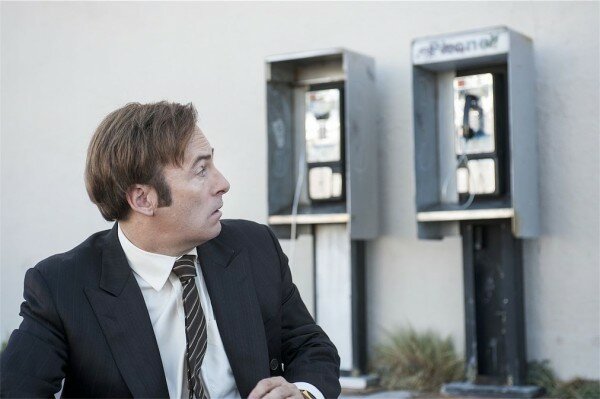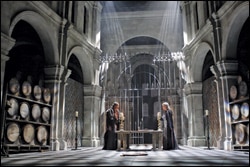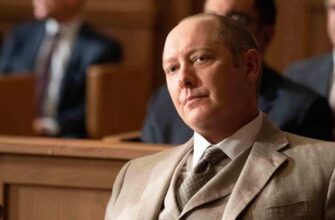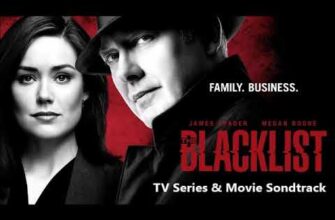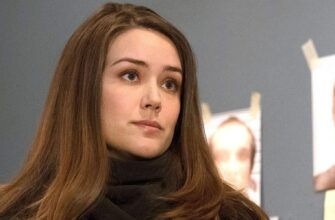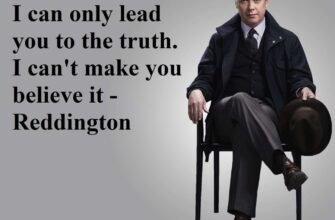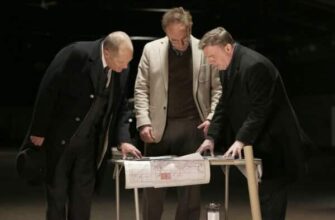Warning: Spoiler Alert
Unsurprisingly, given the high quality of the two-part debut of Better Call Saul, reviews across the board have been extremely generous, with many critics noting that viewers will like the show even more than they anticipate that they will. The reasons for the initial critical success are varied, from the additional layers that Bob Odenkirk has been able to reveal within (pre-Saul) Jimmy McGill to familiar and beloved methods of cinematography previously deployed with Breaking Bad to the feel of exploring additional facets of the world that surrounded Walt and Jesse. But it’s possible that this great start has been enhanced even more by a bit of misdirection – deception would be too strong of a word, and way too judgmental – put forth by series co-creators Peter Gould and Vince Gilligan.
We were all told that Breaking Bad ended in five (or six, depending on how you define seasons) tight campaigns because the story was always meant to be told within that timeframe. When Breaking Bad ended, the Better Call Saul spinoff was a matter of public record, but Gilligan, especially in his appearance on the final Talking Bad, seemed emphatic that the entire saga had been completed. Saul and Mike would be coming back to tell an earlier story, but the Breaking Bad tale was completely over.
And granted, there is nothing that can or will happen on Better Call Saul that will impact the canon of Breaking Bad. But the shocking appearance of Tuco at the end of Episode 1.1 and the desert scene in 1.2 was a strong indication that Gould, Gilligan and Company would not be afraid to dip DIRECTLY into the storytelling well of Breaking Bad – to directly infuse these elements into the new show. Again, this is not to imply any deception whatsoever from the creative team and it’s very possible that we were never meant to read in too much about what would or would not be leveraged into a brand-new story. But however the decision came about to invoke core Breaking Bad elements into this prequel adventure, it’s clear that it was a winner and one that truly raises the ceiling for how great this story can be.
What makes that invocation of classic Breaking Bad so effective is that now the viewers have a heightened awareness while watching subsequent chapters of the story unfold. For example, Episode 1.3, Nacho, did not directly inject any drug gang involvement into the story, but the threats of Jimmy’s new problem client kept that Sword of Damocles hanging. But above all else, what binds the structures of the original series and this prequel is the singular focus around the lead character. On Breaking Bad, Saul was just one of the satellites orbiting around Walter White’s story. Here, not-yet-Saul is the planet and we are seeing other satellites – including Mike, in this episode tasting his first real meat on the bones – taking their place around him.
Having said that, this episode also revealed a real dichotomy between Saul and Walter, because Breaking Bad was the story of Walter’s full transformation into Heisenberg. Better Call Saul began by indicating a similar path, as relatively-honest, small-time attorney Jimmy McGill transforms into the big, bold CRIMINAL lawyer Saul Goodman. But the post-Breaking Bad glimpse shown in the cold open of the pilot portrays a sad Saul in a quieter, more contemplative state that we have very quickly come to associate with Jimmy. And the cold open in 1.3 revealed a young Jimmy as a proto-Saul, a hustler in need of help from his brother Chuck to escape legal trouble. We already knew from the pilot that “Slippin’ Jimmy” used to run scams back in those days, so the real trajectory in the life of Jimmy/Saul seems to be a toggling back and forth between listening to his conscience and tuning it out altogether. This series will largely travel in a one-way direction toward Saul’s professional success and moral bankruptcy, but we are being reminded often even in these early episodes that the man is always an intriguing mix of saint and sinner.
1.3 picks up during what appears to be the night following Nacho’s visit looking for Jimmy’s help in finding the money being stashed by the Kettlemans. Throughout the episode, even those who think they’ve been told the entire story, like Kim, really don’t have a clue as to how vital Jimmy is to the Kettleman saga. His attempt to blackmail them into retaining him as a lawyer failed spectacularly in the two-part series debut and in order to talk his way out of danger in the desert, he had to fess up to his scheme – which, of course, intrigued Nacho greatly. So now that Nacho knows about the money, Jimmy is scared for the family. Late at night, he calls Kim to poke around to see what she knows about the money and she rebuffs his queries, even after he expresses concern for their well-being. Then, apparently thinking better of it, he actually follows through on calling the Kettlemans to warn them directly of their danger. His feeble attempts to disguise his voice notwithstanding, the message got through – as their disappearance indicates.
Suspicious that the family vanished on the very evening that Jimmy made his weird call to her, Kim asks him to come clean about what he knows and he plays dumb. But we then see the manic side of Jimmy come out quickly as he bolts from the courthouse parking facility without paying – in a hurry, he does not have the stickers that Mike demands, so he reaches over to pop the lever as he taunts Mike and peels away – in order to get to a payphone to reach Nacho. Repeated phone messages, left in quick succession, accomplish nothing, but a jumpy Jimmy appears to spot a suspicious figure advancing on him from the distance. As he takes off running, he is then chased by two men before a police car pulls up to them. Jimmy is relieved at first, before he is thrown into the car by all of the men on the scene, who are in fact all policemen.
The consequences of Jimmy’s actions throughout the saga begin to become apparent at the jail, where Jimmy is sent into a holding room to talk to the prime suspect in the Kettleman disappearance, who has sent for him – Nacho himself. Jimmy’s nervous prattling about the case is greeted with unsettling silence from Nacho, who then ominously accuses Jimmy of setting him up for a rival gang to kidnap the family with him holding the bag. Jimmy truthfully proclaims his ignorance of that potential angle and indicates that he doesn’t know how the police honed in on Nacho if he really didn’t grab the Kettlemans. Nacho replies that even though he’s innocent of this matter, the police who are now poking into the lives of him and his associates will find other damning evidence – and that Jimmy is a dead man if he can’t spring Nacho in time to avoid disaster.
Outside the holding room, Kim is none too pleased that Jimmy is representing the prime suspect and that he had been holding out information on her. He pleads for the chance to accompany her and the police to the family house so that he can join them in looking for clues. Once there, he discovers that a doll that is omnipresent in family pictures with one of the young children has also gone missing and he uses that as the jumping-off point to postulate that the family, in effect, “kidnapped themselves.” The police officers and Kim are fairly dubious about his theory, but when he takes Kim outside and confesses to having tipped off the Kettlemans about their impending danger, she begins to believe him. She urges him to tell the police everything, but he refuses to rat on Nacho, preferring to get out from underneath the gangster’s threats by exonerating him.
Back at the courthouse, Mike won’t let Jimmy back into the parking facility, which leads to a physical confrontation in which Jimmy – knowing nothing of Mike’s badass Philly cop past – completely underestimates him as a feeble older guy and gets taken down quickly. But with Jimmy having made first contact – weak though it was – Mike has the option of pressing charges, but declines. Jimmy catches up to Mike in the hallway and gets Mike to admit that, yes, having heard Jimmy tell the cops about his Kettleman theory, he does believe it. Mike begins to tell the story of a runaway bookie in Philadelphia back in the day – and Jimmy’s face is priceless as he realizes just how much he’s been wrong about Mike’s capabilities – who was escaping mobsters looking for payment after a Super Bowl. Everyone was convinced that the bookmaker had traveled a long distance from home, but he spent six months in an abandoned house two doors down from his residence. The moral of the story about people liking to stay close to home even when they’re on the run intrigues Jimmy, who goes on a multi-hour hike in the woods near the Kettleman home. He stumbles on them in a tent in the woods and, after having called Kim to alert her, announces to them that he’s there to take them back home. Craig Kettleman is mildly resistant, but as we saw in the pilot, it’s Betsy who wears the pants in that family. Her physical struggle with Jimmy takes the form of a tug-of war with a large knapsack – that rips in dramatic fashion, raining the county’s stolen money all over the floor of the tent just prior to the fade to black.
Generally speaking, in 1.3 with the Kettlemans, just like 1.2 with the grifting skateboard brothers, Jimmy was on the side of the angels in looking out for folks with whom he had real grievances. In both episodes, he could simply have averted his gaze and allowed something bad to happen to these people – certainly, the Saul Goodman who would casually muse openly about the necessity of murdering Badger and Jesse in Breaking Bad wouldn’t have lifted a finger for them. But the further that we get into this nascent tale, the more we see that danger is mounting exponentially for Jimmy as a result of his original sin – the bungled attempt to blackmail the Kettlemans. That danger will push Jimmy to “break bad” and begin to embrace his “inner Saul,” in some small part maybe as early as Episode 1.4. And as soon as Jimmy finds out that he can continue to live with himself just fine as he embraces the criminal mindset more and more, the rarer that displays of character like the ones displayed in this episode will become. In order to help us understand the formation of Saul Goodman, the show creators have exposed us to his kinder, gentler previous identity. It’s one that doesn’t seem long at all for this world – and those chunks of money shown flying in slow motion may represent its inevitable passing.
